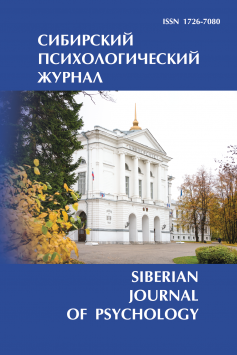Genetic-semiotic aspects of descriptions of psychopathological states
The paper analyzes genetic and semiotic properties of specific psychic adaption variants embodied in psychohystorical fragments of development. Evolutionary strategies include adaptive phenotypic variants which are considered to be pathological. In the development of theoretical approaches a number of statements may complement the concept. The first statement is that the divergence of the psychopathological states (PPS) is caused by the emergence of new programs and by the development of the existing genetic ones. Secondly, nosological typology is considered as the result of consistent development of semiotic structures, following the development of understanding of the emerging structures of consciousness. The semi-otic and genetic approach to psychopathological phenomena (PPPh) typology in psychiatry and clinical psychology is considered to be natural. The consideration of the PPPh as genetic semiotic structures considers their co-evolutionary dynamics. From cultural and genetic co-evolutionary PPPh positions, it is assumed that each historical period is characterized by a variety of PPS, and each ethnic group, as a cultural and natural phenomenon, by its own pathology in linguistic form. We suppose that co-evolution is a dynamic coupling of ecological and genetic systems in their ambiguous isomorphic displays. System-based changes are carried out in the framework of Urmantsev's general theory of systems where a full range of functions is the structure of qualitative and quantitative symmetry transition. Psychopathological states (PPS) have an evolutionary and genetically determined character. This is indicated by constantly reproducing PP stable states which have historical roots. The evolutionary view in psychopathology involves the formation of pathological conditions as evolutionary and dynamic formations and participation of paleopsychopathologic universal complexes in them. Such an approach aims to identify the history of recurrent interactions of two or more systems, leading to a structural coherence. The result is a structural coupling in coordination dynamics and co-evolution. Geneticists perceive PPS as a "violation of epigenetic regulation of genes that can determine the development of complex (multifactorial) diseases". Epigenetic systems are active means of cognition and relation with the environment, evolving according to the internal mechanisms and systemic changes in accordance with Urmantsev's general theory of systems. One of the leading PPPh "defragmentation" is considered from the point of semiotic-genetic and evolving system object. "Defragmentation" corresponds to the mechanism of fixation of systemic change in the operations of transference-mirror transitions basic properties. This approach can be addressed as a broad ecological perspective on mental cognition of psychic objects in a cultural semiotic form which is manifested in the co-evolutional disclosure of potential genetic systems in adaptive socio-cultural forms.
Keywords
эволюция, психопатологические феномены, генетико-семиотические системы, феномен дефрагментации, evolution, psychopathological phenomena, genetic-semiotic systems, phenomenon of defragmentationAuthors
| Name | Organization | |
| Yazykov Konstantin G. | Siberian State Medical University | yazk@mail.ru |
| Abushaeva Magipervas E. | Tomsk Polytechnic University | marga56@mail.ru |
References

Genetic-semiotic aspects of descriptions of psychopathological states | Sibirskiy Psikhologicheskiy Zhurnal – Siberian Journal of Psychology. 2017. № 64. DOI: 10.17223/17267080/64/9
